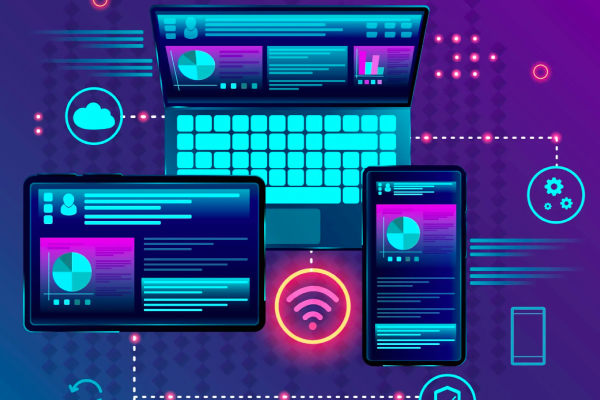An omnichannel customer experience has been a key business goal for brands over the past few years. With changing consumer expectations, and an increasing number of digital natives with hgh purchasing power, most brands are working to deliver omnichannel experiences.
Our previous post took a look at why omnichannel is critical for enterprises today, and how some of the biggest brands are doing it. This post takes a closer look at three of the most common challenges that come up while transforming their omnichannel strategy into an operational reality. We take a look at how to enable omnichannel communication, creating a seamless integrated customer journey, and how to better manage all the resulting data.
#1 Enabling Omnichannel Communication
The cornerstone of omnichannel is the ability of brands to connect with customers across a range of channels of their choice. This also means that brand messaging and information has to be pushed out to different channels simultaneously and effectively, to elicit desirable consumer behaviour. For a retail giant, this might mean showcasing the season’s biggest sale across their site on web and mobile, on their shopping app, and on push notifications across wearable devices or on Alexa. For a media company, this can mean pushing out a breaking news story - the full story on their site, the headline banner on their web and mobile homepage, a short snippet package to their subscribers via a Facebook Messenger, notification message on their news app and possibly more.
But to operationally make this possible - delivering information across different channels and displaying them in the most effective manner for each channel - is the first challenge for enterprises creating an omnichannel strategy.
While realizing the need for creating interactions across different channels, most businesses are unable to make it happen. The usual first steps involve having the content and editorial teams reformat the content multiple times, so it’s suitable for different channels. But that is time-consuming, and can often lead to delays in communication across certain channels. Constantly manually recreating the same content for different interaction channels is also expensive and prone to error. All things considered, trying to deliver omnichannel experiences in this manner is unsustainable, un-scalable and will deliver little to no ROI.
How do you solve - Content-as-a-Service
Content-as-a-Service (CaaS) is a way to deliver structured content across multiple channels, independent of the presentation or display layer. It’s the right solution to enable omnichannel experiences because it allows editorial and marketing teams to ‘write once, publish anywhere’. So content created once does not have to be repeatedly reformatted in expensive, error-prone and time-consuming processes. Once stored in a central repository, a piece of content can be pushed out to different channels, and will be displayed in the most effective manner across diverse presentation layers.
With a CaaS solution in place, like Acquia Content Cloud, businesses can ensure quick and easy omnichannel interaction with their consumers. Capitalizing on time-sensitive opportunities now becomes as simple as pushing out new information/content onto a central repository, and having it delivered out to website, mobile, app, digital displays, wearables etc, with no additional work required.
#2 Building Seamless Integrations
An omnichannel customer experience is one that seamlessly weaves through different interaction channels. So not only do brands have to be available across different devices and platforms, these channels also have to be connected with each other. Only then can a customer go through their entire journey from start to finish without interruptions, dropping it off or picking it up at any time, on any device.
However, the necessary integrations between different interaction and delivery channels is the second challenge for brands building an omnichannel strategy.
Once again, most businesses get started with point-to-point integrations, like connecting their app to their customer service solution, or integrating the chatbot conversations on their website with their product recommendation engine. But these kinds of integrations create rigid solutions that are unable to scale up or adapt to new technologies and processes. Point-to-point integrations are also time-consuming and need to be repeatedly performed for integrating any one channel with others, every time a new channel is added. That makes it extremely difficult to have a truly omnichannel set up that delivers results.
How do you solve - APIs
Adopting an API-first approach, no matter how small or limited the current scope of your omnichannel strategy, is a critical necessity. APIs open up integration and communication across the different delivery channels and customer touchpoints, allowing data and information to quickly get to where it needs to be. This is advantageous for both the businesses and their customers because:
- Well-integrated channels across the customer journey mean that customers can strat, continue, and complete their journey across different devices without having to frustratingly repeat themselves. The order they placed on a retail app, will be in their cart when ther log in on their desktop. The complaint they raised on Facebook Messenger, will be addressed when they open the app.
- The technology architecture of the entire customer journey remains flexible and highly scalable. Every new channel added to the journey requires a simple API integration to be incorporated into the existing architecture.
- Ensures that your omnichannel strategy is ready to scale with future innovations
#3 Data management & governance
Integrating different interaction channels into one holistic customer journey also means bringing together the data associated with them. More often than not, the data formats are as diverse as the number of channels being integrated. This data had been typically stored in silos and has not had to work with each other up till this point.
So, data management and governance, and creating a data architecture that enables innovation is the third key challenge while creating an omnichannel strategy.
How to solve - Data Lakes
An integrated customer journey will generate a huge volume of data points that need to be effectively managed and governed. A data lake implementation is the best solution for:
- Storing a lot of this data that will directly drive your omnichannel journey - what the customer did on one channel has to reflect the next time he logs in and interacts on a different channel.
- Enabling access to, and experimentation with a significant chunk of the data being collected, to further enhance individual customer journeys with insights that drive personalization
- Effective data governance - with segmentation, access controls, and security best practices to ensure this data is ready to be leveraged across the organizations to improve existing, and drive new business models
All said and done, omnichannel experiences are a basic customer expectation in this age, and not doing it right can severely limit growth for businesses. Hence, business leaders, especially those in charge of digital experience and technology innovations, should bring in partners that can help roll out a well-design omnichannel strategy roadmap.
Srijan is currently working with leading brands like Estee Lauder and Crain Communications to deliver omnichannel solutions. Srijan teams are also equipped to enable architecture modernization with APIs and data lake implementation, to enable digital transformation.
Looking to build and scale omnichannel solutions? Drop us a line and our expert team will be in touch.
Our Services
Customer Experience Management
- Content Management
- Marketing Automation
- Mobile Application Development
- Drupal Support and Maintanence
Enterprise Modernization, Platforms & Cloud
- Modernization Strategy
- API Management & Developer Portals
- Hybrid Cloud & Cloud Native Platforms
- Site Reliability Engineering




